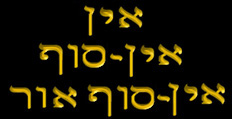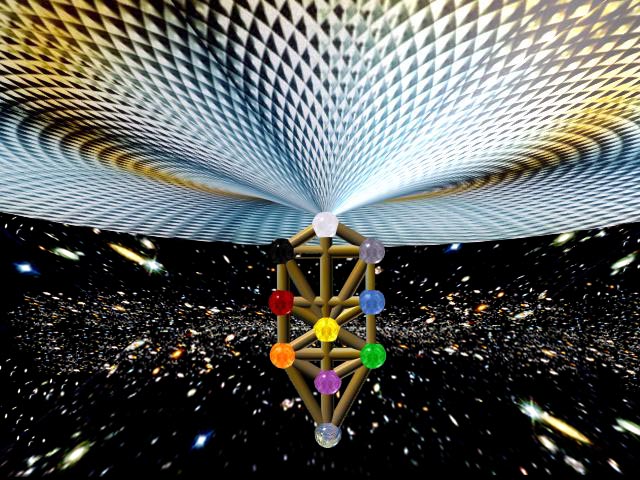



![]()
![]()
TZIMTZUM
from Gershom Scholem:
"The doctrine of tzimtzum, of God's self limitation, states that the primeval act of creation by God was not one in which the Infinite left its mysterious depths, an act of emanation from within to without, as in early Kabbalah, but that this primal step was in fact "the contraction of the Infinite from Himself to Himself," an act of self-gathering and contraction within Himself in order to create the possibility of the processes of the world....Only after this act of contraction does the Infinite turn outwards, sending a thread of the light of His essence into the primeval void created by tzimtzum, from which there emanate the sefirot.The process of the world is created and developed in all of its stages through the meeting of the lights or Angels that move in two opposite directions: the lights which retreat to their source and seek to return to the bosom of the Infinite, and the lights which burst forth and descend from there (histalkut ve-hitpashtut)."
Creation arose out of a desire to give in the bosom of the Infinite.
Shevirah, or the "breaking of the vessels," is what follows, because the vessels were unable to stand the abundance of divine light poured into them. Thus creation veered from the original intent of the Creator. The fragments of light became trapped in the shards (klippot) of the broken vessels, and our job is to release them. The goal is to recreate Adam Kadmon, the primal man. This is an almost messianic quest, waiting for the eschaton, the being who brings the end of time. Shevirah is the great crisis in the structure of creation.
The healing response is tikkun. This is partly the work of the Creator, but there are certain tasks of tikkun that have been given over to us and which constitute the primary goal of human life. These are the mitsvot, or commandments (613 of them), given to humanity by the Creator. Fulfilling Mitzvot is a great opportunity given to us, and the wellspring of our spiritual awakening.
Human contacts God via kavvanah, or intention, that penetrates the infinite, opening the sources of cosmic plenitude, during prayer and meditation on the Divine aspects of God as revealed by the Tree of Life, and by fulfilling Mitzvot. This is devekut, the Kabalistic samadhi, Divine Union, and the goal of the mystic. [Samadhi is a Vedic concept].
The doctrine of Tzimtzum was originated by Rabbi Isaac Luria, and predominated through the Jewish world from about 1625, with traces of its influence in evidence today. It was a development of Kabbalistic theory evolving out of, and stimulated by, the Jewish expulsion from Spain in 1492.
The words at the top of the page say: "AIN," meaning "none," or "nothing." Then, "AIN SOPH;" "soph" means "end," thus "No End." Then, "AIN SOPH AUR;" "aur" means light, as in "aura," or "aurora," thus "Light Without End." This is shown above the Divine contraction, to indicate the Primordial Infinite, the undifferentiated cosmos, or "Prakriti" as discussed in Key 10.
(In Hebrew, some ending letters have an alternate form, as you can see).